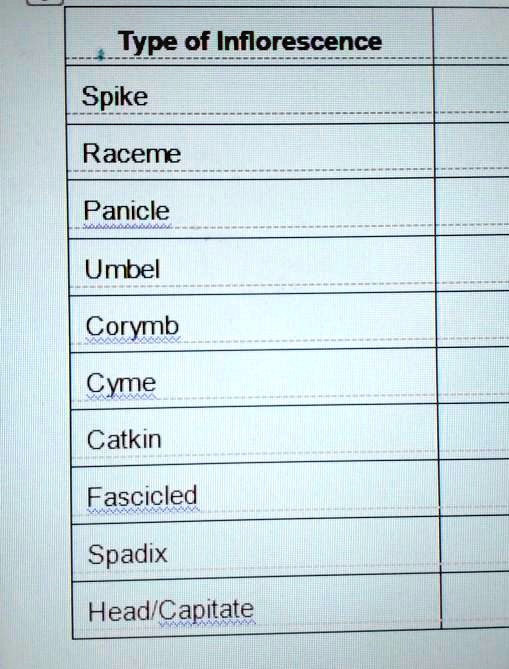
The whole inflorescence functions as a single flower for pollinator attraction - e.g. Capitulum or head - A crowded group of sessile flowers on an enlarged compound receptacle. Ament or catkin - a spike of unisexual, apetalous flowers shed as a unit- wind pollination Spike - elongate, unbranched, indeterminate Unbranched racemose inflorescences with sessile flowers It looks like the spokes of an umbrella.ī. Umbel - flat topped or convex inflorescence with all pedicels arising from a common point.

Corymb - a flat topped or convex indeterminate unbranched cluster, i.e., a flat topped raceme. the inflorescence of snapdragon ( Antirrhinum) Raceme - elongate, unbranched, indeterminate, e.g. Unbranched racemose inflorescences with pedicellate flowers Below is a conspectus of the terms used to describe inflorescences.Ī. There is some variation on these patterns. Panicle (compound raceme): branched, indeterminate axis terminates in a flower, lateral floral branches develop below terminal flower, each branch ends in a flower, but produce lateral branches too. new flowers are generated at the tip of the inflorescence, no definite determination, never terminate in a flower compound inflorescences, branchingįour main categories of inflorescence in flowering plants: Determinate, with a flower terminating the axis (cymose inflorescences, cymes) Indeterminate, with an axis that continues growing (racemose inflorescences, racemes) different ways of grouping of flowers on the plant. Plants have different "inflorescence architectures", i.e. Inflorescences are aggregations of flowers. More at come.Biol 324 Introduction To Seed Plant Taxonomy Akin to Old Frisian keme, Old Saxon kumi, Old High German cumi ( “ arrival ” ), Gothic 𐌵𐌿𐌼𐍃 ( qums ), Old English cuman ( “ to come ” ). Old English Etymology 1 įrom Proto-Germanic *kumiz ( “ arrival ” ), from Proto-Indo-European *gʷem- ( “ to go, come ” ). 55 What Rubarb, Cyme, or what Purgatiue drugge Would scowre these English hence. 55, 1st Folio), supposed to be an error for cynne, Senna. 1605 Shaks.

The flower cluster is a cyme (terminal flower is the most advanced), is terminal within the bud and may contain up to six individual flowers.Īrchitecture: cyma - see cyma References Warrington, Apples: Botany, Production and Uses, page 157,

The plant bears small groups of two or three yellowish coloured flowers on an axillary cyme. Chary, University Botany 2: Gymnosperms, Plant Anatomy, Genetics, Ecology, page 190, The inflorescence is some form of cyme, and the flowers are usually regular.


 0 kommentar(er)
0 kommentar(er)
